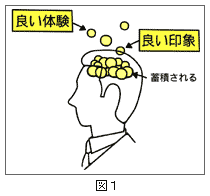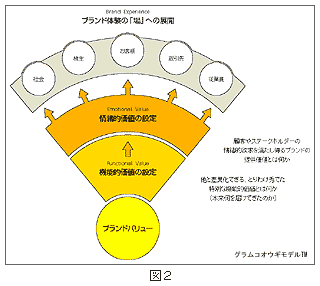Today's Notables
Brand Strategy at TK
May 2005
Hisashi Furuichi
President and C.E.O.

Twenty years ago, the importance of corporate identity (CI) was popular
topic of consideration. Identity itself means the collection of
characteristics that makes something recognizable or known, but
also means having distinct or unique characteristics that give something
individuality. Corporate identity is part of an overall management
strategy that makes use of logos, colors and design as a visual
means to impart a corporate image to customers and employees.
In the past several years, it has become increasing more important
to develop CI as a brand. Developing CI alone will not however increase
the value of the corporation; CI as a brand must be fostered.
In Japan, many people readily recognize European brands such as
Louis Vuitton, Hermes, and Gucci, for example. These corporate brands
are doing well and enjoying brisk sales despite a sluggish Japanese
economy. This is substantial evidence that the more established
a brand is, the better and longer it can sell even at a higher price.
Establishing a brand is not an overnight proposition, and even the
brands that have been established over a long period of time, can
fall overnight.

At TK, we kept CI strategy in mind when we developed the current mid-term
operations plan three years ago, but not to the extent of having
a comprehensive theoretical basis for a corporate identity strategy.
Through an acquaintance, however, I met someone who is an expert
in brand strategy. After reading information about his company and
his book, I became acutely aware of the importance of brand strategy.
After discussing it internally, I decided to hire his company to
consult for TK regarding our brand strategy. The name of the company
is Gramco Ltd. and is Japan's large branding firm. They have an
impressive list of clients for whom they've developed a brand strategy.
Mr. Yamada, who is the president of Gramco Ltd., explained that
in order to successfully develop a corporate or product brand, you
must give your number one stakeholder (the customer) a positive
experience and good impression several times over. Over time, they
will think of you first and there will be a natural propensity to
"spread the word" to other people. (Chart 1) Several factors
are crucial in establishing a brand for a corporate or product name,
and it takes time to achieve. Progress toward branding is based
on a consistent, logical plan that is derived from a company making
a complete and comprehensive effort to establish a brand.
At TK, we started the branding project in October of last year
and are currently holding meetings with Gramco Ltd. project team
and are in the process of developing the strategic plan. We have
completed a brand model (Chart 2) and are moving forward with brand
visualization. By next month's Notables, this process should be
complete and will be officially announced.
Because the first impression is the most important, the corporate
logo or mark is very important in conveying the corporate image.
In Mr. Yamada's own words, "Brand is the combination of humanity
and truth," and must leave a lasting impression. I hope you
will read the surprising results of next month's Notables.
| Item | Keyword |
|---|---|
| Functional value | Delivery of quality solutions and technological excellence related to the mixing and transporting of fluid material. |
| Emotional value | Forging new business frontiers ; products and services characterized by safety, reliability, wonderment, and amazement |
| Personality | Faithful business partner with a robust spirit for inquiry |
| Strategic customer | People with business opportunities, ideas and challenges in blending |
| Message | Blending Science into Innovation. |
| Positioning | A corporation that meets the mixing and blending needs of various industries |
| Brand vision | Toward PRIME ; to the future of mixing |
HOME > What’s New > Today's Notables > Details














